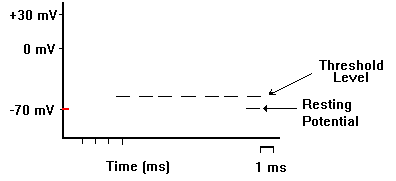

You may find your car does not work perfectly on the first try, particularly if its axles are not parallel or the wheels wobble. The more you inflate the balloon the more potential energy it stores, which in turn is converted to more kinetic energy, according to the law of conservation of energy-so the car will go faster. Your design will be most efficient if the straw is pointed straight back and not downward or to the side. When the end of the straw is aimed backward, the air pushes your car forward, as described by Newton's third law of motion. When you tape the balloon to a straw and attach it to the body of your car, however, you can control the direction of the escaping air. When you inflate a balloon and let it go, it zips randomly around the room. For example: What happens if you use a cardboard box instead of a plastic bottle for the body? What happens if you use different diameter straws? What about different materials for the wheels and axles? Get some friends and try building different cars and racing them against one another. Turn this into an engineering design project and try building your car with different materials.

See what adjustments you can make to make the car go farther.Put the car down on a flat surface and release your finger.What do you think will happen when you put the car down and release your finger? Blow through the straw to inflate the balloon, then put your finger over the tip of the straw to trap the air.Use tape to secure the straw to the bottle.
ACTION POTENTIAL PHYSICS SCIENCE EXPERIMENT FREE
Push the free end of the straw through the hole and out the mouth of the bottle.Cut a small hole in the top of the water bottle, just big enough to push the straw through.Wrap the tape very tightly so the connection is airtight. Tape the neck of the balloon around one end of the other straw.You can add some glue if tape is not sufficient. If your car gets stuck or does not roll smoothly make sure: your axles are parallel to each other the hole in each bottle cap is centered and the straws are securely taped to the water bottle and do not wobble. Make sure the car rolls easily and coasts for a bit before stopping. Put your car down on a flat surface and give it a good push.Press each bottle cap onto the ends of the wooden skewers.Have an adult help use the scissors to poke a “+”-shaped hole directly in the center of each plastic bottle cap.Cut the wooden skewer in half and push each piece through one of the straws.Tape both pieces of the straw to one side of the water bottle.Scissors or sharp knife (Have an adult use or supervise your use of this tool.).You will see, however, getting your wheel and axle to spin smoothly is a critical part of getting your balloon car to work! This invention has been around so long, we take it for granted-and many of us ride in wheeled vehicles every day. The car also contains a simple machine: the wheel and axle. In this project you will use this principle to build a toy car that is propelled forward by the stream of air escaping a balloon as it deflates. This principle is used in real rockets and jets that shoot a high-speed stream of gases out the back of their engines, propelling the vehicle forward. This means that there must be an equal and opposite reaction-the air pushes back on the rubber, propelling the balloon forward. When you inflate a balloon and then release the nozzle, the rubber contracts and pushes the air out the nozzle. Energy never “disappears”-it just changes to another form.Īnother way to think about the balloon's movement is to use Newton's third law of motion: For every action there is an equal and opposite reaction. According to the law of conservation of energy, the total amount of energy is conserved. Some of the energy is also converted to heat due to friction. When you release the balloon, this energy is converted to kinetic energy-the energy of motion-as the balloon zooms around the room. It might not seem like it at first, but a simple balloon car is loaded with physics and engineering concepts! When you inflate a balloon, it stores potential energy in the form of stretched rubber and the compressed air inside. You can even find a friend, build two cars and race them against each other. Turn a pile of trash into a toy car-and watch it go! In this activity you will learn some physics concepts and use recycled materials to build a toy car that is propelled by a balloon.


 0 kommentar(er)
0 kommentar(er)
